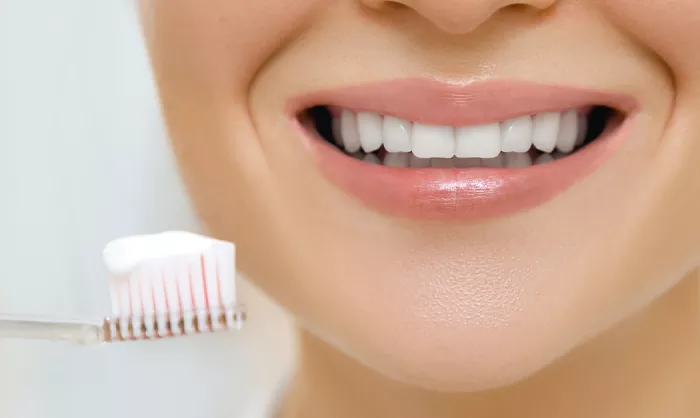Professional teeth whitening is a popular cosmetic dental procedure that can significantly enhance the brightness of your smile. However, many patients are left wondering about the proper post-whitening care, particularly when it comes to brushing their teeth. This article will delve into the details of whether you can brush your teeth after professional whitening, providing you with all the necessary information to maintain your newly brightened smile.
Understanding the Whitening Process
Before discussing post-whitening care, it’s essential to understand what happens during the professional whitening process. Professional whitening typically involves the application of a high-concentration bleaching agent, usually hydrogen peroxide or carbamide peroxide, to the teeth. This agent penetrates the enamel and breaks down the stains, resulting in a whiter appearance.
The procedure can be performed in-office by a dental professional or at home using custom-fitted trays provided by your dentist. In-office treatments often yield immediate results, while at-home treatments may take several days or weeks to achieve the desired effect.
Immediate Post-Whitening Care
The First 24 Hours: A Critical Period
The first 24 hours after professional whitening are crucial for the longevity of your results. During this period, your teeth are more susceptible to staining and sensitivity. Therefore, it’s essential to follow specific guidelines to protect your teeth and maximize the whitening effects.
Can You Brush Your Teeth Immediately After Whitening?
One of the most common questions patients have is whether they can brush their teeth immediately after a whitening treatment. The answer is not straightforward and depends on the type of whitening procedure you underwent.
In-Office Whitening
If you had an in-office whitening treatment, it’s generally recommended to wait at least 30 minutes to an hour before brushing your teeth. This waiting period allows the bleaching agent to fully penetrate the enamel and complete the whitening process. Brushing too soon can potentially remove the bleaching agent and reduce the effectiveness of the treatment.
At-Home Whitening
For at-home whitening treatments, the guidelines may vary depending on the specific product and instructions provided by your dentist. Some at-home whitening kits recommend brushing your teeth immediately after removing the trays, while others advise waiting a certain period. Always follow your dentist’s instructions to ensure optimal results.
Long-Term Post-Whitening Care
Maintaining Your Bright Smile
After the initial 24-hour period, you can resume your regular oral hygiene routine, including brushing and flossing.
However, there are additional steps you can take to maintain your bright smile and prevent future staining.
Choosing the Right Toothpaste
Not all toothpaste is created equal, especially when it comes to maintaining whitened teeth. Opt for a non-abrasive, whitening toothpaste that is specifically designed for use after professional whitening. These toothpaste formulations are gentle on your enamel and help to remove surface stains without causing damage.
Avoiding Stain-Causing Foods and Beverages
Certain foods and beverages are notorious for causing stains on your teeth. To maintain your whitened smile, try to limit your consumption of coffee, tea, red wine, and dark-colored berries. If you do indulge, consider using a straw to minimize contact with your teeth, and rinse your mouth with water afterward.
Regular Dental Check-Ups
Regular dental check-ups are essential for maintaining your oral health and the brightness of your smile. Your dentist can monitor the condition of your teeth and provide professional cleanings to remove any surface stains that may have accumulated.
Dealing with Sensitivity
It’s not uncommon to experience some degree of tooth sensitivity after a professional whitening treatment. This sensitivity is usually temporary and should subside within a few days. However, there are steps you can take to minimize discomfort during this period.
Using Desensitizing Toothpaste
Desensitizing toothpaste can help to alleviate tooth sensitivity by blocking the transmission of pain signals from the surface of your teeth to the nerves. Use a desensitizing toothpaste as directed by your dentist, and consider applying a small amount directly to the sensitive areas for additional relief.
Avoiding Extreme Temperatures
Sensitivity can be exacerbated by exposure to extreme temperatures. Avoid consuming very hot or cold foods and beverages immediately after whitening, and opt for lukewarm or room-temperature items instead.
Common Myths About Brushing After Whitening
Brushing Immediately After Whitening Enhances Results
Some people believe that brushing their teeth immediately after whitening will enhance the results by removing any residual bleaching agent. However, this is a misconception. Brushing too soon can actually reduce the effectiveness of the treatment by removing the bleaching agent before it has fully penetrated the enamel.
You Should Avoid Brushing Altogether After Whitening
On the other end of the spectrum, some individuals think that they should avoid brushing their teeth altogether after whitening to prevent any potential damage. This is also incorrect. While it’s important to wait a short period after in-office treatments, maintaining a regular oral hygiene routine is crucial for long-term oral health and the preservation of your whitened smile.
Whitening Toothpaste is Sufficient for Maintaining Results
While whitening toothpaste can help to remove surface stains, it is not a substitute for professional whitening treatments. Whitening toothpaste typically contains lower concentrations of bleaching agents and is not as effective at penetrating the enamel to break down deep stains. For significant whitening results, professional treatments are necessary.
Conclusion
Professional teeth whitening can provide you with a brighter, more confident smile, but it’s essential to follow proper post-whitening care guidelines to maintain your results. While you can brush your teeth after whitening, it’s important to wait a short period after in-office treatments and to use the right products to protect your enamel and prevent sensitivity. By following these guidelines and maintaining a regular oral hygiene routine, you can enjoy your newly whitened smile for years to come.

